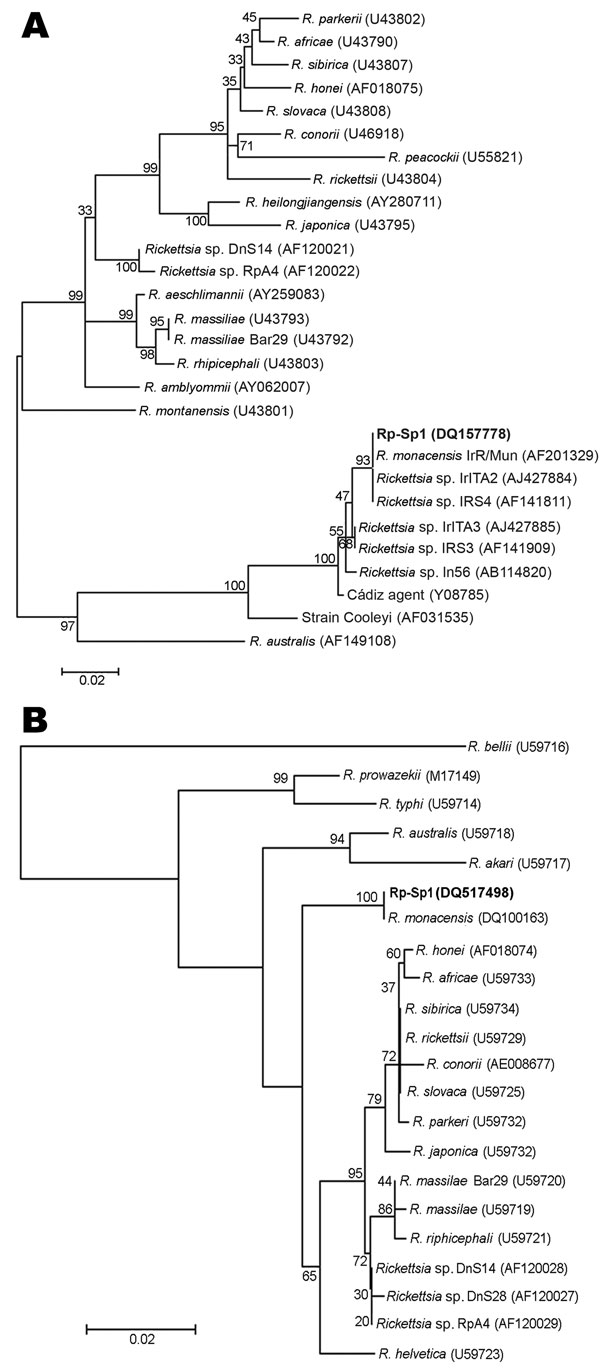Volume 13, Number 9—September 2007
Dispatch
Rickettsia monacensis and Human Disease, Spain
Figure

Figure. Neighbor-joining phylogenetic analysis based on ompA (panel A) and gltA (panel B). Mega 3 software (www.megasoftware.net) was used for the calculation of pairwise distances. Numbers near each node represent the bootstrap values. The isolate from patient 1 is shown in boldface. GenBank accession no. for each sequence is in parentheses.
Page created: July 01, 2010
Page updated: July 01, 2010
Page reviewed: July 01, 2010
The conclusions, findings, and opinions expressed by authors contributing to this journal do not necessarily reflect the official position of the U.S. Department of Health and Human Services, the Public Health Service, the Centers for Disease Control and Prevention, or the authors' affiliated institutions. Use of trade names is for identification only and does not imply endorsement by any of the groups named above.